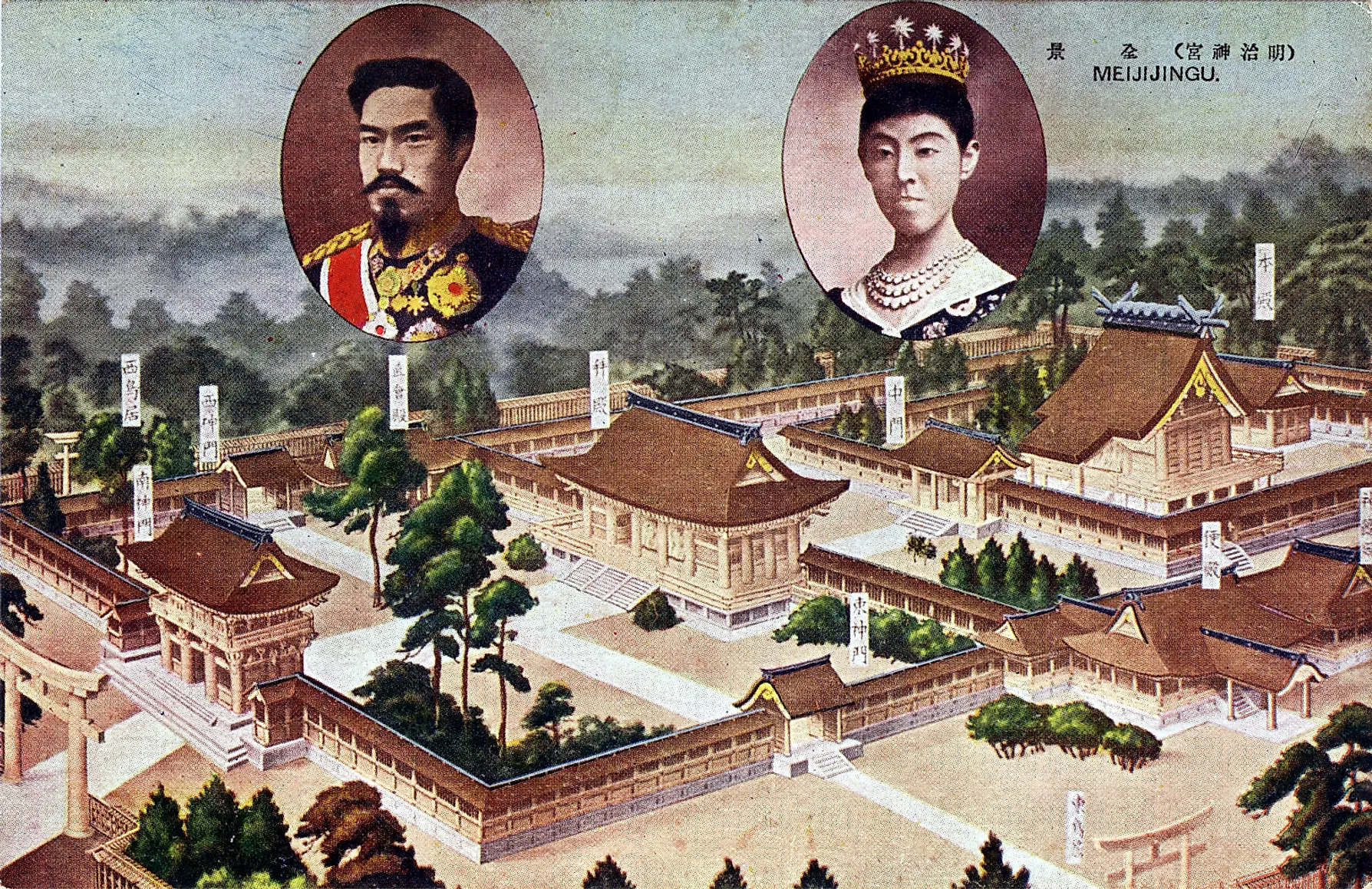
Meiji Restoration: The Modernization of Japan
In 1603 AD, Japan, after decades of near-endless warfare abruptly closed itself off from the rest of the world. Japanese people, with a few very rare exceptions, were forbidden from leaving the island. All trade missions from foreign nations, aside from the Netherlands and China were banned as well.
Christianity, a new religion that was introduced by European traders was strictly cracked down on and outlawed. Breaking any of these laws was often met with capital punishment or torture. This period of intense self-isolation is now referred to as the Sakoku, literally meaning "closed country" in Japanese. This practice of shying away from the outside world continued for 250 years until it all came crashing down in the middle of the 19th century.
The fallout that stemmed from these events began one of the most remarkable and sudden transformations perhaps any nation has experienced in recorded history. In only a few short decades Japan transformed itself from a largely agrarian feudal society into a thriving modern nation-state that rapidly formed an empire of its own and even challenged European empires in open conflict.
The West and Japan Collide
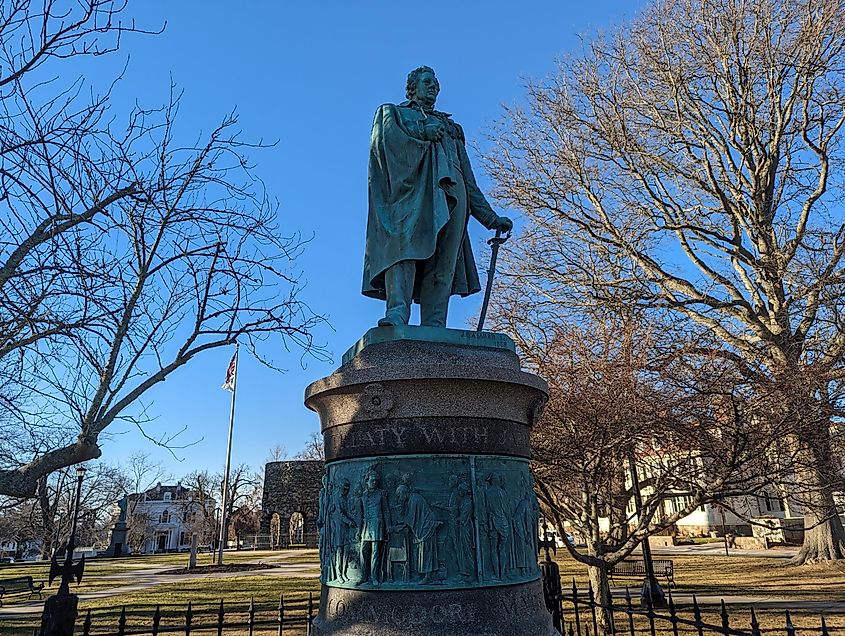
Despite having a relatively small navy compared to the European empires of its day, it was surprisingly the United States that was the first Western power to establish any form of formal relations with an isolationist Japan. In 1853, Commodore Matthew C. Perry arrived off the Japanese coast with a small detachment of warships.
Perry demanded that Japan open its ports to American trade missions and also allow any damaged American ships to stop in Japanese territory for repairs. The Japanese were given exactly one year to contemplate what Perry had told them.
At first, many within the Japanese shogunate were reluctant to bow to any foreign demands. It was clear to everyone within the Japanese government that if they refused the demands of Perry they would be attacked. Some welcomed the thought of war while others were much more cautious and pragmatic. Even though no one in Japan had ever seen such modern ships, it was obvious to most that in the event of an open conflict, they would be at the mercy of the foreigners. When Perry returned exactly one year later in 1854 the Shogun accepted the agreement, officially opening Japan up to American trade. Other Western powers followed suit in the coming years and it was not long before Japanese ports were flooded with foreigners along with their goods, faith, and philosophies.
A Weakened Shogunate
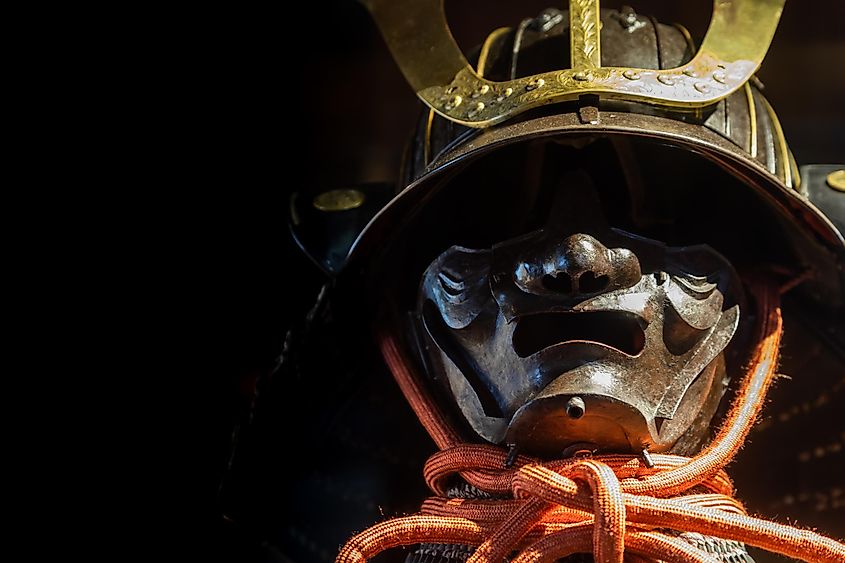
The signing of all of these new treaties was not well received by many within the Japanese ruling classes. These often unfair agreements were signed essentially at gunpoint and only displayed how far behind Japan had fallen during its two centuries of isolation. It was now apparent to some within the Japanese aristocracy that they needed to make radical changes in order to secure the sovereignty of Japan.
The disillusion of large segments of the Japanese elite led them to turn away from the long-ruling Shogunate and instead embrace another age-old institution in its stead. The Emperor of Japan had reigned side by side with the Shogun for much of Japanese history but never held any significant political power.
Nothing more than a cultural figurehead, this symbolic role rapidly started to gain more legitimacy as more feudal lords put their faith in the emperor as a potential new leader against the failing shogunate. A new political philosophy started to emerge that was based on a blend of Chinese Confucianism and Japanese nationalism. This line of thinking claimed the imperial family and the emperor himself were divine beings and that it was now "unholy" to be ruled by a military leader such as the Shogun.
It is debatable how sincere some of the ruling clans were when they embraced this new line of thinking. No matter how genuine, it had the same result. By 1867, the Choshu and Satsuma, the two most powerful anti-shogun clans, rose up in open rebellion under the slogan of "revere the emperor, expel the barbarians."
The Emperor Takes Power
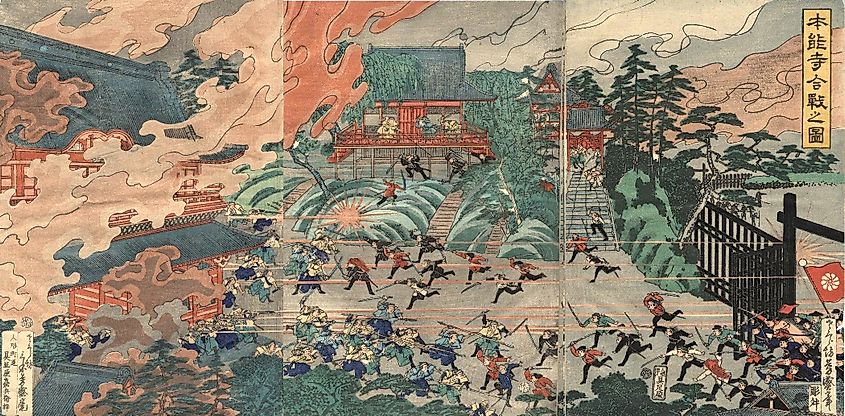
Only one year after the Choshu and Satsuma declared war against the government, they were able to overpower the forces of the shogun and storm into the capital city of Kyoto. Marching directing into the Imperial Palace they declared the end of the shogunate and the restoration of Emperor Meiji as the head of state of Japan.
A brief civil war then broke out between imperial and shogunate forces. This conflict is often called the Boshin War. Only lasting three years, the imperial forces scored a handful of impressive victories against the clans that were still loyal to the shogun. The imperial forces were much more open to the embracement of modern weapons and European-style drilling and fighting, making them more effective on the battlefield.
Despite numerous battles being fought, the Boshin War was a relatively bloodless affair. When the dust settled less than 4,000 people had died. Not only did this give the new imperial government a solid base to work from but it also provided Japanese citizens confidence that this new government was capable and sincere in their promises of stabilization and sensible reforms.
A New Japan
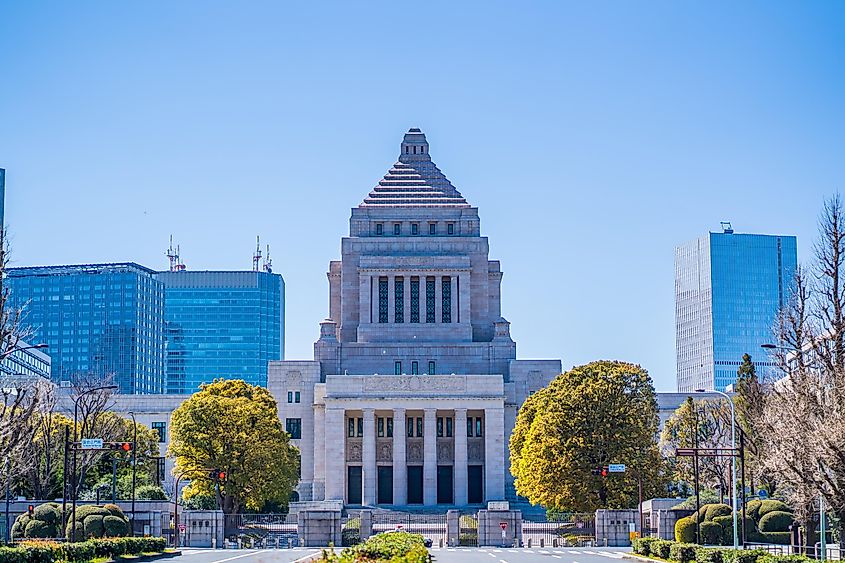
Meiji Japan was now on the rise. Countless earth-shattering reforms and changes were made to Japanese society. Japan's first constitution was established in 1889 setting up a quasi-parliamentarian system that somewhat resembled what was in place in Great Britain at the time. A Diet (parliament) was set up along with an elected lower house and a prime minister. At the time the constitution was passed, only 5% of the male Japanese population was eligible to vote. This was eventually opened up to all Japanese men by the 1920s.
New educational systems were introduced, the feudal system was abolished along with the Samurai, and massive changes were made to the military structure. No longer was the Japanese military led by a small cadre of elite members of its warrior class but instead seasoned generals and admirals who had risen through the ranks through their own merit rather than their namesake.
Now the Japanese military was made up of commoners who only a few years ago had been peasants forced to work the land of their lords. Equipped with the latest weapons from the West, the army and navy Imperial Japan was able to field in only a few years was nothing short of extraordinary. The Japanese were not shy about flexing this new military might on their neighbors either.
Imperial Ambitions and War With Russia
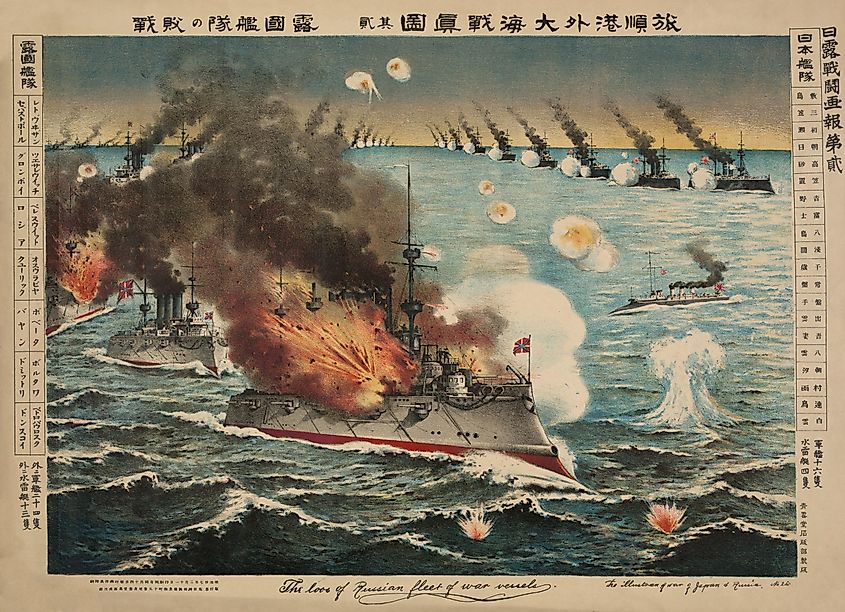
After being on the receiving end of the imperial might of the West in the middle of the 19th century, the Japanese made sure to secure an empire of their own as a safeguard against any potential hostile actions in the future. By the late 1890s and early 20th century, the Japanese Empire formally occupied and annexed Korea, Taiwan, and the Ryukyu Islands.
The Japanese even entered into open conflict against China over its influence over Korea and came out on top. Something that would have seemed nearly unthinkable only a few decades prior. China was forced to cede small amounts of territory to the Japanese and granted them the same one-sided trade deals that were given to Western powers. This not only further humiliated Japan's key rival in the region but also elevated its status as a world power that was worthy of respect.
Finally, in 1904, the Japanese Empire launched a surprise war against the Russians over territorial disputes in the far reaches of Siberia. A Russian fleet docked at Port Arthur was destroyed by the Japanese navy. The Japanese attacked by land and came into contact with a Russian army numbering in the thousands. Despite both sides suffering heavy losses, the Japanese routed the Russians. This was a huge milestone and achievement for the Japanese. Not only had they sunk most of Russia's eastern fleet but gained their first-ever victory over a European power.
The Russian Tzar dispatched a relief fleet sailing out of Saint Petersburg but it too met a similar fate when it engaged with the Japanese navy in open battle. Stunned, the Russians sued for peace. The resulting treaty essentially ended Russian expansion in the region and cemented Japan as the sole power in East Asia.
In only 40 years, Japan went from a feudal society whose population consisted of Samurai and peasant farmers to a modern nation that embraced technological developments in the West and used them to its own advantage with stunning results.
Never before has any society undergone such radical and sudden change and still managed to do so without devolving into endless civil and social turmoil. Japan was truly unique in this time period, which was largely dominated by European empires. Not only were they able to resist the imperial ambitions of Europeans, but they were able to forge their own empire that was more than capable of winning its own wars..











